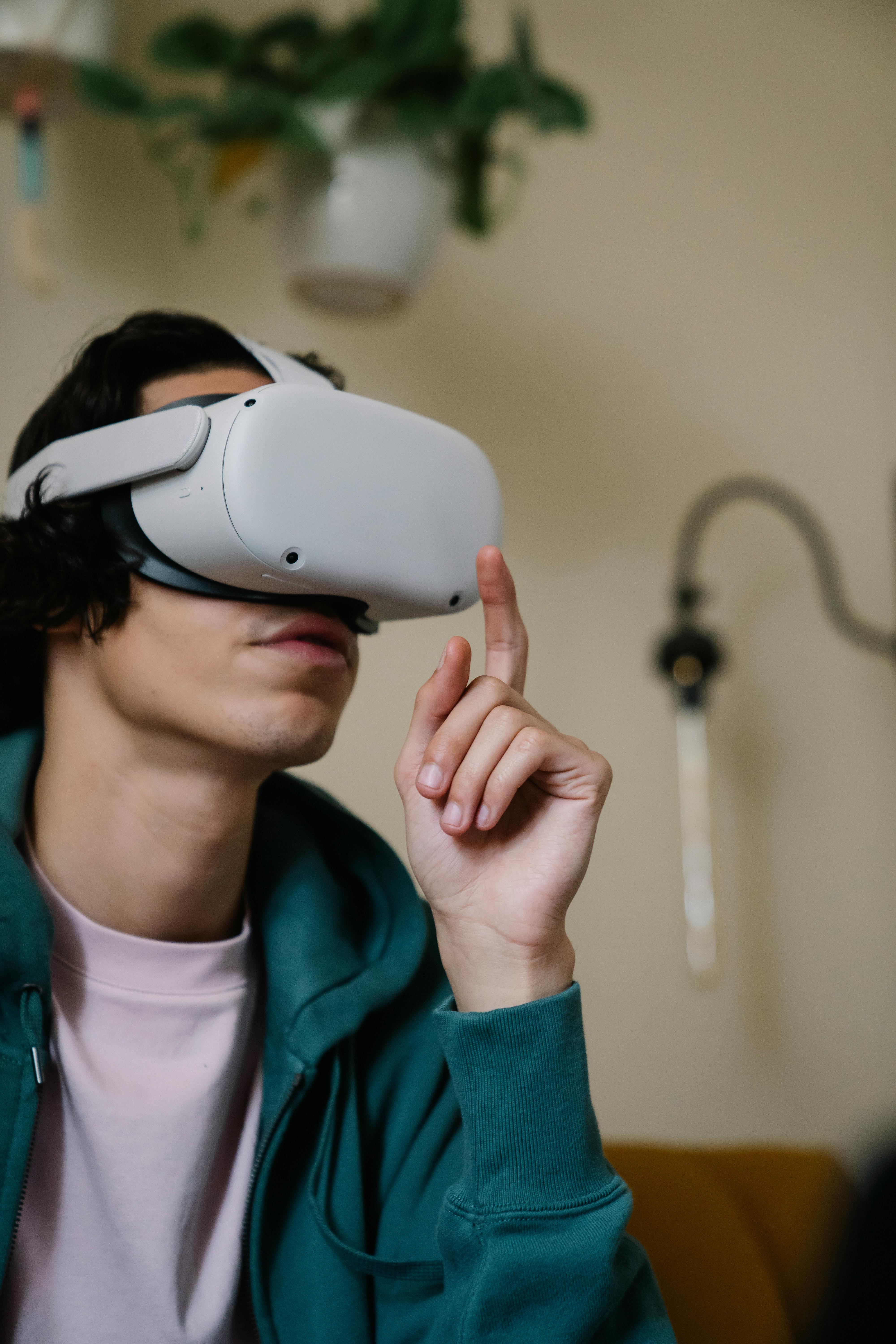Imagine being able to find a sense of calm and clarity in the midst of life’s chaos. Picture yourself effortlessly letting go of stress and tension, while gaining a renewed sense of focus and mental clarity. Through the power of visualization exercises, you can achieve just that. By simply closing your eyes and vividly imagining peaceful scenes or desired outcomes, you can tap into your inner creativity and bring about a profound state of relaxation. In this article, we will explore how visualization exercises can aid in not only relaxation, but also in enhancing mental clarity and overall well-being.

Benefits of Visualization Exercises
Visualization exercises have numerous benefits that can greatly enhance your overall well-being. By incorporating visualization techniques into your daily routine, you can experience reduced stress, improved focus and concentration, enhanced creativity, and a boost in confidence and self-esteem.
Reducing Stress
Visualization exercises are a powerful tool for reducing stress. When you engage in visualization, you create a mental picture or scenario that helps you relax and unwind. By envisioning calming scenes or scenarios, you can activate the relaxation response in your body, leading to a decrease in stress hormones such as cortisol. This can provide relief from the physical and emotional symptoms of stress, promoting a sense of calm and tranquility.
Improving Focus and Concentration
If you struggle with maintaining focus and concentration, visualization exercises can be incredibly beneficial. By using your imagination to create a vivid mental image of your desired outcome or task, you can enhance your ability to concentrate on the task at hand. Visualization exercises help train your mind to stay present and focused, allowing you to complete tasks with greater efficiency and accuracy.
Enhancing Creativity
Visualization exercises can also help enhance your creativity. By tapping into your imagination and using visualization techniques, you can unlock your creative potential and generate innovative ideas. When you engage in creative visualization, you allow your mind to explore new possibilities and envision unique solutions to problems. This can be particularly valuable for individuals in creative fields or those seeking to broaden their creative thinking abilities.
Boosting Confidence and Self-Esteem
Visualization exercises have the power to boost your confidence and self-esteem. When you visualize yourself successfully achieving your goals or overcoming challenges, you create a positive mental image of yourself as capable and competent. This can instill a sense of self-belief and empowerment, leading to increased confidence and improved self-esteem. By regularly practicing visualization exercises, you can cultivate a strong and positive self-image.
Principles of Visualization
To make the most of visualization exercises, it’s important to understand and apply certain principles. Here are some key principles to keep in mind:
Creating a Relaxing Environment
Before you begin your visualization practice, it’s important to create a relaxing environment. Find a quiet and comfortable space where you can focus without distractions. Dim the lights, play soothing music if desired, and ensure that you are in a comfortable position, either sitting or lying down. Creating a peaceful atmosphere will help you relax and fully engage in the visualization process.
Choosing a Visualization Technique
There are various visualization techniques available, and it’s important to choose one that resonates with you. Some popular techniques include guided imagery, mindfulness meditation, progressive muscle relaxation, positive affirmations, and memory visualization. Experiment with different techniques and find the one that allows you to connect most effectively with your imagination and desired outcome.
Engaging Senses in the Visualization
To make your visualizations more vivid and immersive, engage multiple senses in the process. For example, if you are visualizing being in a serene beach setting, imagine the sound of waves crashing, the sensation of warm sand beneath your feet, the smell of the ocean, and the taste of salt in the air. By incorporating various sensory details, you can create a more realistic and engaging visualization experience.
Focusing on Details and Specifics
When practicing visualization, focus on details and specifics. The more vividly you can imagine the scene or scenario, the more powerful the effects will be. Imagine the colors, shapes, textures, and movements as if they were right in front of you. Pay attention to small details and immerse yourself fully in the visualization. This level of detail helps create a more realistic experience and strengthens the connection between your mind and body.

Visualization Techniques
There are various visualization techniques that you can explore and incorporate into your practice. Each technique offers unique benefits and can cater to different preferences. Here are some popular visualization techniques to consider:
Guided Imagery
Guided imagery involves listening to a recorded or live narration that guides you through a specific visualization experience. It typically includes descriptive language and prompts to help you engage your imagination and create a clear mental image. Guided imagery can be particularly helpful for beginners or those who prefer a structured approach to visualization.
Mindfulness Meditation
Mindfulness meditation involves focusing your attention on the present moment, including your thoughts, sensations, and surroundings. While not exclusively a visualization technique, mindfulness meditation can incorporate visualization as a way to cultivate mindfulness and awareness. By calmly observing and visualizing your thoughts in a non-judgmental manner, you can develop a deeper sense of self-awareness and clarity.
Progressive Muscle Relaxation
Progressive muscle relaxation is a technique that involves systematically tensing and relaxing different muscle groups in the body. While it primarily focuses on physical relaxation, you can enhance the practice by incorporating visualization. As you tense each muscle, visualize tension leaving your body, and as you release the tension, visualize a sense of relaxation and ease flowing through the muscles.
Positive Affirmations
Positive affirmations involve repeating positive statements or affirmations to yourself. While not strictly a visualization technique, you can enhance the effectiveness of affirmations by visualizing yourself embodying the qualities or outcomes you desire. For example, if your affirmation is “I am confident and capable,” visualize yourself confidently engaging in activities or successfully achieving your goals.
Memory Visualization
Memory visualization involves revisiting positive memories and visualizing them in detail. By recalling past experiences that brought you joy, happiness, or a sense of accomplishment, you can evoke positive emotions and recreate the positive sensations associated with those memories. This technique allows you to tap into the powerful emotions associated with your past successes and use them to fuel your present goals and aspirations.
Steps to Practice Visualization Exercises
To get started with visualization exercises, follow these steps:
Finding a Quiet and Comfortable Space
Find a quiet and comfortable space where you can engage in visualization exercises without interruptions. Ensure that the environment promotes relaxation and tranquility, and eliminate any distractions that may hinder your focus.
Relaxing the Body and Mind
Before you begin visualization, take a few moments to relax your body and calm your mind. You can do this by practicing deep breathing exercises, progressive muscle relaxation, or any other relaxation techniques that resonate with you. By starting from a relaxed state, you can more easily enter a receptive and open mindset for visualization.
Selecting a Visualization Technique
Choose a visualization technique that appeals to you and aligns with your goals. Consider the principles discussed earlier and select a technique that allows you to connect with your imagination and desired outcomes most effectively.
Starting with a Guided Visualization
If you’re new to visualization exercises, start with guided visualization. Find a guided imagery recording or a meditation app that offers guided visualization sessions. Let the narrator guide you through the visualization experience and assist you in creating vivid mental images.
Customizing and Personalizing the Visualization
Once you feel comfortable with guided visualization, try customizing and personalizing your visualizations. Create your own scenarios, settings, and outcomes that align with your specific goals and aspirations. Make the visualization experience unique to you and tap into your individual desires and motivations.
Repeating Regularly for Optimal Results
Consistency is key when it comes to visualization exercises. Engage in visualization regularly, ideally on a daily basis, to maximize the benefits. Make it a part of your routine, whether it’s in the morning, before bed, or during moments of stress or uncertainty. The more you practice, the more natural and effective your visualizations will become.

Combining Visualization with Other Relaxation Techniques
To enhance the relaxation and mental clarity benefits of visualization exercises, consider combining them with other relaxation techniques. Here are a few techniques that can complement visualization:
Deep Breathing Exercises
Deep breathing exercises are simple yet effective techniques for relaxation. By consciously focusing on your breath and taking slow, deep breaths, you can activate the body’s relaxation response and calm your mind. Practice deep breathing exercises in conjunction with visualization to deepen your state of relaxation and enhance the overall experience.
Progressive Muscle Relaxation
Progressive muscle relaxation can be combined with visualization to create a more profound sense of calm and ease. As you engage in visualization, pay attention to any tension or discomfort in your body. Use progressive muscle relaxation techniques to release that tension and promote physical relaxation alongside the mental imagery.
Yoga and Stretching
Yoga and stretching exercises can complement visualization by combining physical movement with relaxation techniques. Engage in gentle yoga poses or stretches before or after your visualization practice to reduce muscle tension and promote overall relaxation. The combination of movement, deep breathing, and visualization can create a holistic and rejuvenating experience.
Aromatherapy and Essential Oils
Aromatherapy and the use of essential oils can enhance the sensory experience of visualization. Consider incorporating calming scents such as lavender, chamomile, or sandalwood into your visualization space. Diffuse essential oils or use scented candles to create an inviting atmosphere that further promotes relaxation and mental clarity.
Potential Challenges and Tips for Success
While visualization exercises can be highly effective, they may come with a few challenges. Here are some potential challenges you may encounter and tips to overcome them:
Restless and Distracted Mind
It’s common to experience a restless and distracted mind, especially when you first start practicing visualization. To overcome this, be patient with yourself and acknowledge that it takes time to develop focus and concentration skills. Don’t get discouraged if your mind wanders during visualization. Gently redirect your attention back to the visualization and practice returning to the present moment.
Lack of Patience and Persistence
Visualization exercises require persistence and patience. It may take time before you notice significant results or experience the full benefits of visualization. Stay committed to your practice and be consistent in your efforts. Trust the process and remember that with continued practice, you will gradually develop the skills to make visualization a powerful tool for relaxation and mental clarity.
Incorporating Visualization into Daily Routine
Finding the time and remembering to incorporate visualization exercises into your daily routine can be a challenge. To overcome this, make visualization a priority by scheduling it into your day. It can be helpful to choose a specific time, such as after waking up, during a lunch break, or before bedtime, to ensure that you have dedicated moments for visualization. Consider setting reminders or incorporating visualization into existing routines to help establish a regular practice.
Seeking Professional Guidance
If you find it challenging to practice visualization exercises on your own or if you want to deepen your practice, consider seeking professional guidance. There are therapists, coaches, and experts who specialize in visualization techniques and can provide personalized guidance tailored to your specific needs and goals. Working with a professional can offer valuable insights and support to enhance your visualization journey.
Scientific Evidence and Research
Visualization exercises have been the subject of numerous studies and research. Scientific evidence supports the efficacy of visualization techniques in various aspects of well-being. Here are some key findings from research on visualization:
Effects of Visualization on Brain Activity
Studies using neuroimaging techniques, such as functional magnetic resonance imaging (fMRI), have shown that visualization exercises can activate specific brain regions associated with perception, attention, and emotional processing. Visualization has been found to stimulate neural networks involved in creating mental images, leading to increased brain activity in these areas.
Studies on Visualization and Stress Reduction
Research has consistently shown that visualization exercises can significantly reduce stress levels. In a study published in the Journal of Behavioral Medicine, participants who engaged in regular visualization exercises experienced reduced levels of stress, anxiety, and depression. The study also found positive effects on physical health indicators, such as blood pressure and heart rate.
Improvements in Cognitive Performance
Visualization exercises have been found to enhance cognitive performance. In a study published in the Journal of Experimental Psychology: Applied, participants who engaged in visualization exercises before a cognitive task showed improved performance and accuracy compared to those who did not visualize. Visualization was found to enhance cognitive processes such as attention, memory, and problem-solving.
Visualization in Sports and Performance Psychology
Visualization exercises have long been utilized in sports and performance psychology. Athletes who incorporate visualization into their training routines often report improved performance, focus, and confidence. Research has shown that visualization can enhance motor skill development, reduce performance anxiety, and improve overall athletic performance.
Visualization Apps and Resources
If you’re looking to explore visualization further or enhance your practice, there are various apps and resources available to support you. Consider the following options:
Guided Visualization Apps
There are numerous apps available that offer guided visualization sessions. These apps provide a range of visualization exercises, from relaxation and stress relief to goal achievement and personal growth. Some popular guided visualization apps include Headspace, Calm, and Insight Timer.
Virtual Reality for Visualization
Virtual reality (VR) technology can offer an immersive and highly realistic visualization experience. VR headsets and applications allow you to visualize and interact with virtual environments, creating a more engaging and sensory-rich experience. Virtual reality can be particularly beneficial for athletes, performers, or individuals seeking to overcome specific fears or phobias.
Visualization Books and Guides
There are several books and guides available that explain various visualization techniques and provide step-by-step instructions. These resources can offer in-depth knowledge and practical tips to enhance your visualization practice. Some recommended books include “Creative Visualization” by Shakti Gawain and “The Power of Visualization” by Lee Pulos.
Online Visualization Communities and Forums
Online communities and forums can provide a supportive space to connect with others interested in visualization. Joining these communities allows you to share experiences, seek advice, and gain inspiration from like-minded individuals. Websites such as Reddit or online forums dedicated to mindfulness and personal development can be great resources for finding visualization communities.
Real-Life Success Stories
Visualization exercises have made a significant impact on the lives of many individuals. Here are a few real-life success stories showcasing the power of visualization:
Overcoming Anxiety and Panic Attacks
Sarah, a 32-year-old woman, struggled with anxiety and panic attacks for years. She decided to incorporate visualization exercises into her daily routine and noticed remarkable improvement. By visualizing herself in calm and safe environments during moments of anxiety, Sarah was able to reduce the frequency and intensity of her panic attacks. Visualization became a go-to tool for her to regain control over her thoughts and emotions.
Improving Study Habits and Academic Performance
John, a college student, was struggling with poor study habits and lack of focus. He began practicing visualization before studying, visualizing himself fully engaged and focused on his academic tasks. The visualization exercises allowed him to enter a state of deep concentration, leading to improved study habits and enhanced academic performance. John’s grades significantly improved, and he felt more confident and capable in his studies.
Enhancing Athlete’s Performance
Michael, a professional golfer, incorporated visualization techniques into his training regimen. By visualizing successful shots, confident swings, and winning performances, Michael experienced a boost in his overall performance and mental resilience. Visualization exercises helped him develop a strong mental game, enabling him to stay focused, composed, and motivated during competitions.
Career and Personal Development
Sophie, a young professional, used visualization exercises to enhance her career and personal development. Through visualizing herself confidently presenting in meetings, successfully accomplishing professional goals, and gaining new skills, Sophie experienced a significant improvement in her self-confidence and career trajectory. Visualization became a valuable tool for her personal growth and empowerment.
Conclusion
Visualization exercises offer a multitude of benefits to enhance your relaxation and mental clarity. By integrating visualization into your daily routine, you can experience reduced stress, improved focus and concentration, enhanced creativity, and boosted confidence and self-esteem. Follow the principles of visualization, explore different techniques, and combine it with other relaxation techniques for optimal results. Be patient, persistent, and open-minded as you embark on your visualization journey. With regular practice and dedication, you can unlock the power of visualization and enjoy the transformative effects it can bring to your life.
